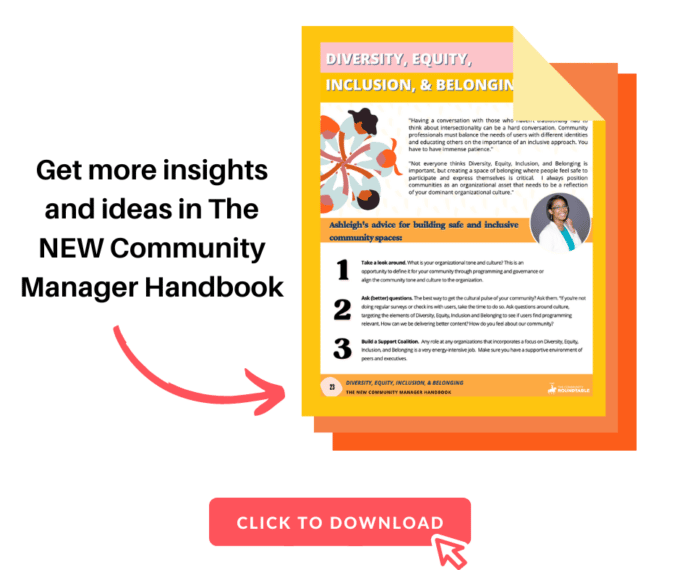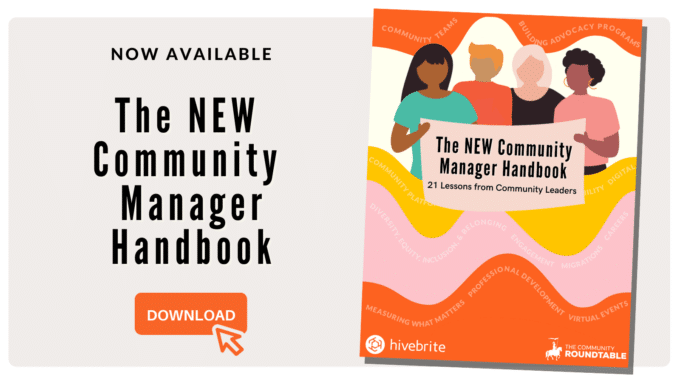Ashleigh Brookshaw has spent her career building community in the insurance, association, and now software spaces, so she knows her way around the foundations of community management. Still, some things surprise her.
“You may think people would want to create a welcoming environment for all but that’s not always the case. There may be organizational departments that are only focused on their own deliverables and objectives. They may not be thinking from an organizational and strategic perspective.”
One barrier Ashleigh has seen to progress as it relates to Diversity, Equity, Inclusion, and Belonging (DEIB) and an organization’s culture is that the organization just isn’t ready for it.

“I know people don’t necessarily like to have [DEIB] conversations, but your executive stakeholders — your senior leadership — might not see it as a priority.”
Ashleigh has seen organizations where DEIB isn’t set as a strategic priority and can be viewed as a check-the-box exercise. For example, “We’re going to make a statement on DEIB” with no tangible action or resourcing to support it due to other priorities.
Ashleigh shared 3 tips for building safe and inclusive community spaces.
“Having a conversation with those who haven’t traditionally had to think about intersectionality can be a hard conversation. Community professionals must balance the needs of users with different identities and educating others on the importance of an inclusive approach. You have to have immense patience.”
- Take a look around. When you start to think about building space and inclusive community spaces, think about your organizational tone and culture? Use these conversations and reflections about DEIB as an opportunity to define it for your community through programming and governance or align the community tone and culture to the organization.
- Ask (better) questions. The best way to get the cultural pulse of your community? Ask them. “If you’re not doing regular surveys or check-ins with users, take the time to do so. Ask questions about culture, targeting the elements of Diversity, Equity, Inclusion, and Belonging to see if users find programming relevant. How can we be delivering better content? How do you feel about our community?”
- Build a Support Coalition. Any role at any organization that incorporates a focus on Diversity, Equity, Inclusion, and Belonging is a very energy-intensive job. You can’t build safe and inclusive spaces if you don’t already feel like you belong and are valued. Make sure you have a supportive environment of peers and executives.
Ashleigh encourages anyone focused on DEIB work in their community, “Not everyone thinks Diversity, Equity, Inclusion, and Belonging is important, but creating a space of belonging where people feel safe to participate and express themselves is critical. I always position communities as an organizational asset that needs to be a reflection of your dominant organizational culture.”
About The NEW Community Manager Handbook
The NEW Community Manager Handbook features 21 profiles of community leaders sharing advice and ideas on everything from accessibility, hiring, strategy, gamification, defining the digital workplace, technology, and more. Each profile is paired with research from the State of Community Management reports and includes tactical advice for implementing what you’ve learned.
Learn from community management experts at Easterseals, Glencore, Microsoft, UKG, the World Bank Group, Analog Devices, Inc., AAMC, Zapier, Doctors Without Borders, and more.

